Italian cuisine is well-known – and well-liked – all over the world. Whether it’s pizza, pasta, or gelato, many people have a favorite Italian dish, a go-to Italian restaurant in their hometown, and a dream of eating authentic Italian food in its country of origin. But why is Italian food so special?
Jump to a section of this article
An Overview of Italian Cuisine
Italian food comes down to two simple principles: diversity and simplicity. Across the different regions of Italy, you’ll find vastly different dishes, each highlighting the geographical, historical, and cultural roots of a specific area. These dishes represent a region’s identity and inspire local pride.
Regional specialties, from Sicilian Arancini (fried rice balls) to Venetian Sarde in Saor (sardines in a sweet and sour sauce), could not be more different, meaning no one style or flavor defines Italian cuisine.
Perhaps the one thing that unites all Italian dishes is the belief that simple cooking using fresh, local ingredients is always best. Restaurants serve what’s in season, and chefs proudly boast about freshly caught seafood or basil grown in their own gardens.
There’s a reason why a dish as simple as buffalo Mozzarella and tomato tastes so much better in Italy – because the produce is fresh, local, and treated with care. Of course, we can’t forget a drizzle of extra virgin olive oil.
With these strong principles of regional diversity and simple cooking, Italian food has been transported around the globe. The influence of Italian cuisine can be felt not only in restaurant kitchens but also in the daily eating, shopping, and cooking practices of people worldwide.
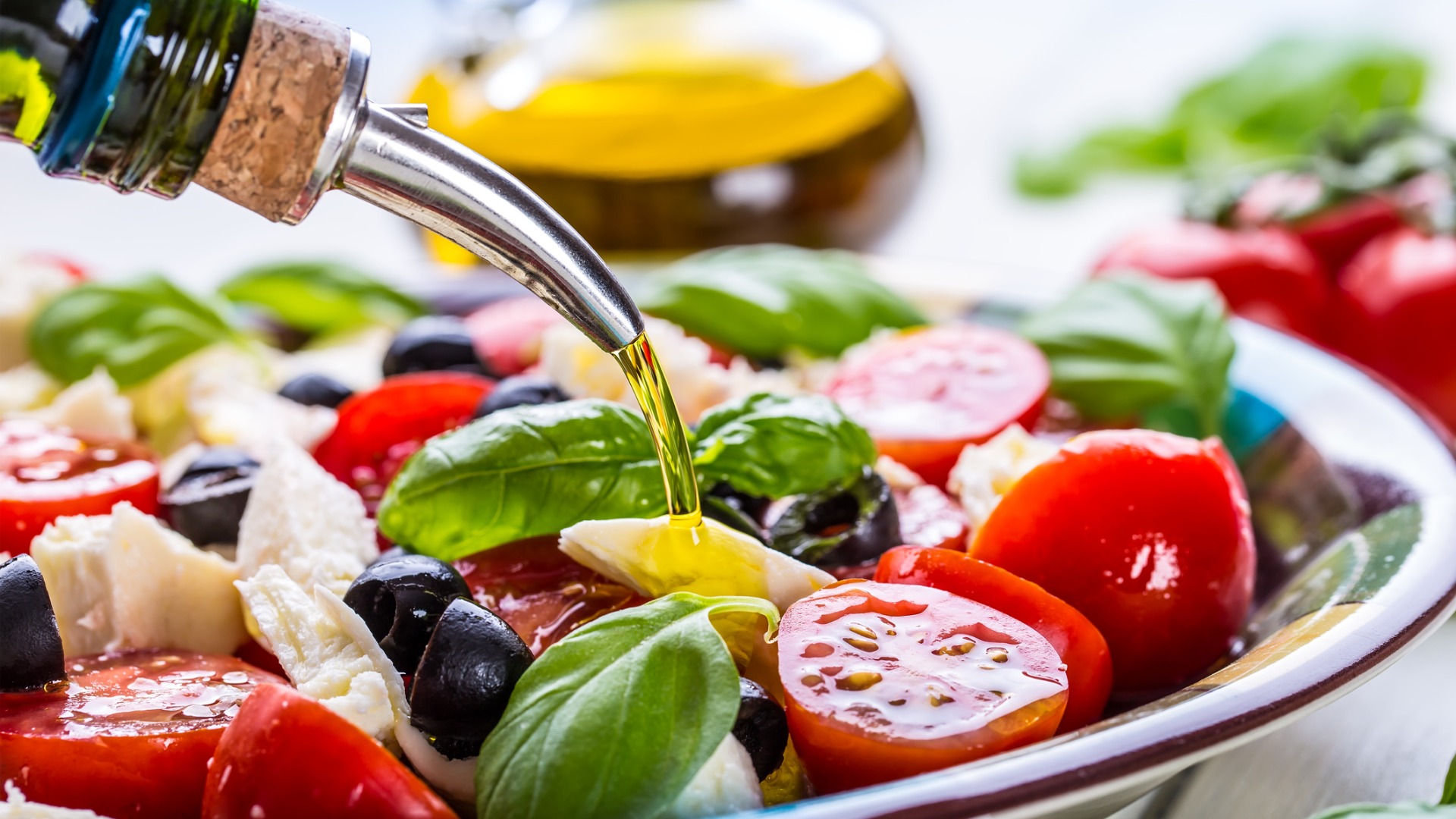
History of Italian Cuisine
The Origins of Italian Cuisine
Italian cuisine dates back to 400 BC when a Greek Sicilian wrote about quality ingredients and the simple preparation of fish. As the Roman Empire expanded, simplicity gave way to excess. Conquering Romans brought back spices, grains, seafood, fruit, cheese, and meat to enhance their diets.
Italian Food in The Middle Ages
After the Roman Empire began to wane, other influences took hold of Italy during the Middle Ages. In the north, butter and beer were introduced while in the south, Arabs brought fruit, vegetables, and the wheat used to make pasta to Sicily.
In contrast to the large banquets of the Roman Empire, a rise in Christianity across Europe in the Middle Ages emphasized fasting, simple meals, less meat, and a reliance on bread and legumes.
A 15th-century cookbook from Rome talks about the importance of fresh herbs rather than dried spices, while other cookbooks from the era begin to hint at the regional differences that Italian cuisine will become known for.
The Renaissance of Italian Food
Coming into the Renaissance, Italy’s food flourished alongside its art, music, and philosophy. The bourgeoisie class was established with a focus on eating for pleasure and experimenting with food.
Tuscany excelled during the Renaissance. The olive oil, wine, and meat the region is known for today first became popular back in the 1400s-1600s. Other parts of Italy also began to specialize in certain cuisines during this time, such as large banquets for the Pope in Rome and the import of spices and sugar through Venice.

Italian Cuisine in The 18th & 19th Centuries
This emphasis on regional differences extended into the 18th century. To rival French cuisine, which was gaining in popularity at the time, Italian chefs decided to focus on regional specialties, rather than a unifying Italian flavor.
Cookbooks in the 18th and 19th centuries began to address everyday Italians cooking at home, rather than just professional chefs. Coupled with the advancements in food technology at the time, this made cooking and eating Italian food much more accessible.
WW2 & Post-War Italian Food
During World War II, ingredients were rationed in Italy and families had to come up with creative substitutes. But following the war, once-luxury ingredients became a lot more accessible thanks to newfound fridges and ovens in home kitchens. Italians began to eat for pleasure once more, seeking simple and convenient meals that would fit into their busy lives.
Post-war, many Italian ingredients and traditional ways of cooking also began to be protected under EU law. This helped preserve the cultural and historic importance of Italian cuisine, while also making it more revered around the world.
Italian Cuisine Today
Nowadays, authentic Italian cuisine is characterized by its regional differences and emphasis on traditional cooking methods. These fundamentals often butt heads with more modern ways of thinking, such as fusion cuisine and fast food. Ideas like Italy’s Slow Food movement, which was founded in 1986, help preserve what makes good Italian food worth waiting for.
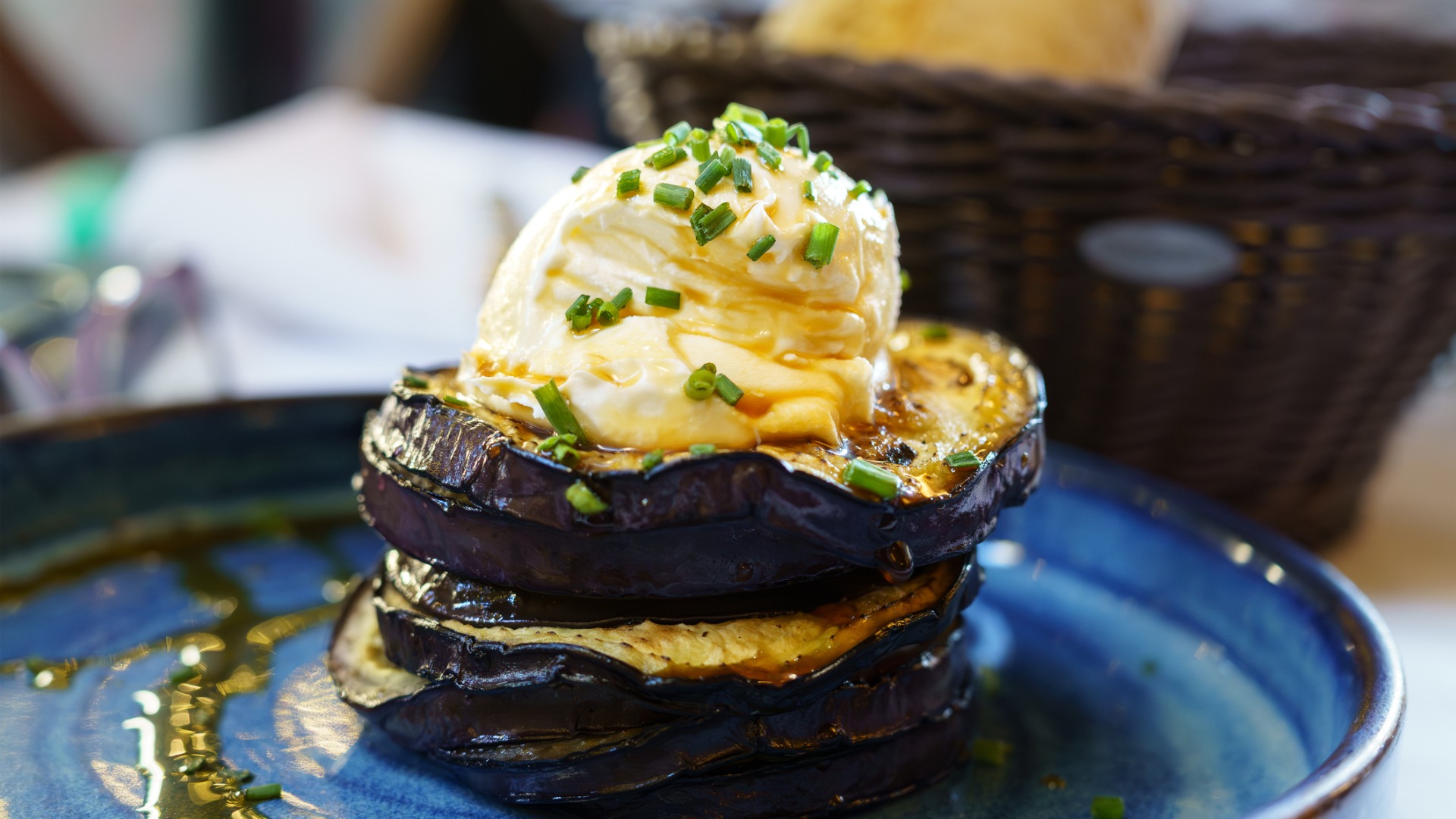
Key Ingredients of Italian Food
While Italian cuisine is very diverse and many ingredients feel at home on an Italian plate, there are some key ingredients closely associated with Italian cooking.
Olive Oil
The olive tree first reached Greece in 2800 BC, was brought along the Mediterranean as Greeks conquered and explored, and continued to spread throughout the Roman Empire. Olive oil became a staple of Ancient Roman cooking and continues to be a key ingredient in modern Italian cuisine.
Italy is the second-biggest producer of olive oil after Spain and third-largest consumer after Greece and Spain. Most olive oil in Italy is produced in Calabria, Puglia and Tuscany.
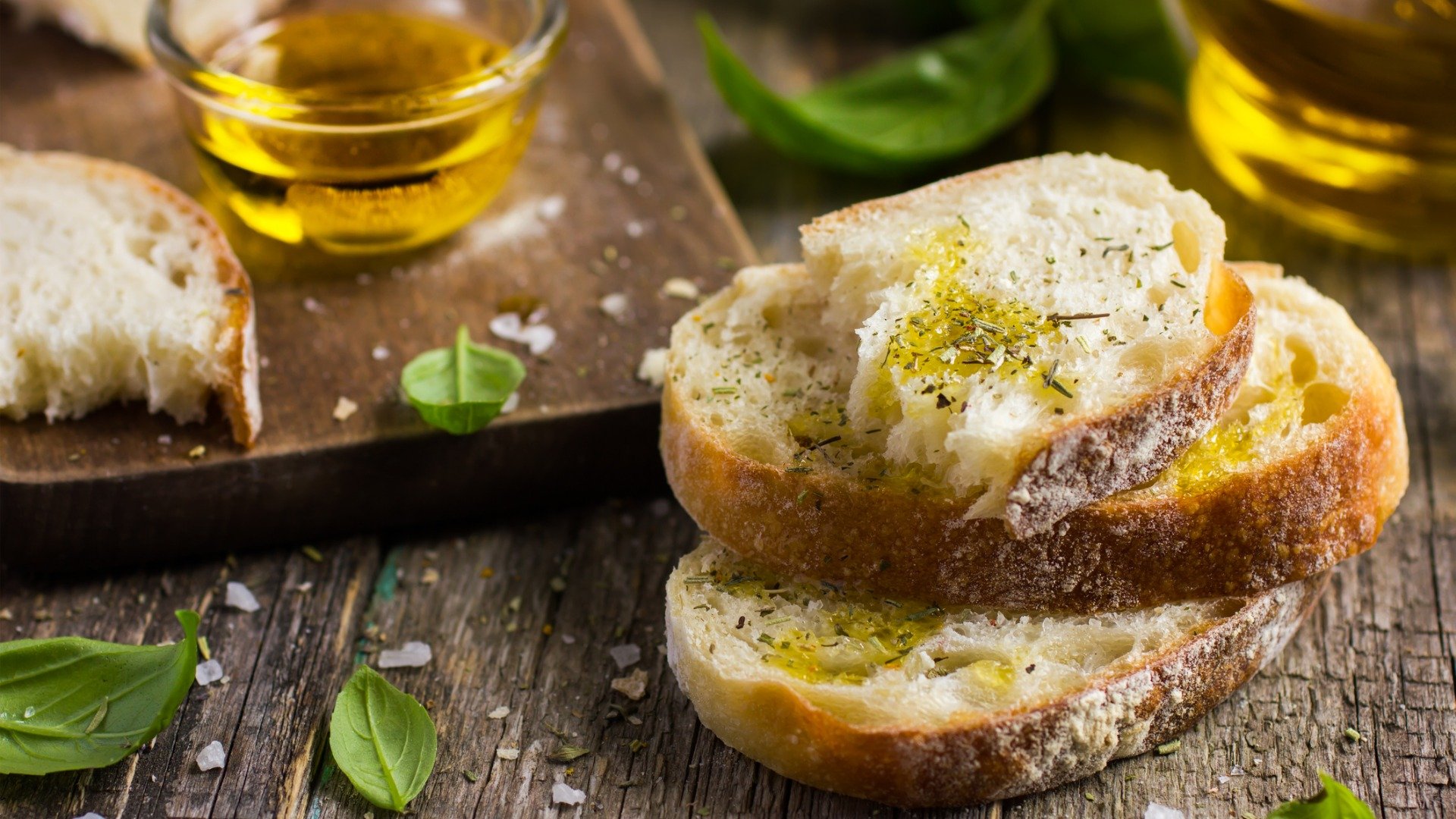
Tomatoes
During the colonization of the Americas, the Columbian Exchange brought tomatoes to Italy. At first, tomato plants were seen as ornamental, with Italians even using them as table decor. But by the 17th and 18th centuries, fresh tomatoes began to find their way into classic Italian dishes.
Over the next few centuries, different tomato varieties were cultivated based on their growing region, while new ways of using tomatoes emerged, such as sun-dried tomatoes and tomatoes in pizza sauce.
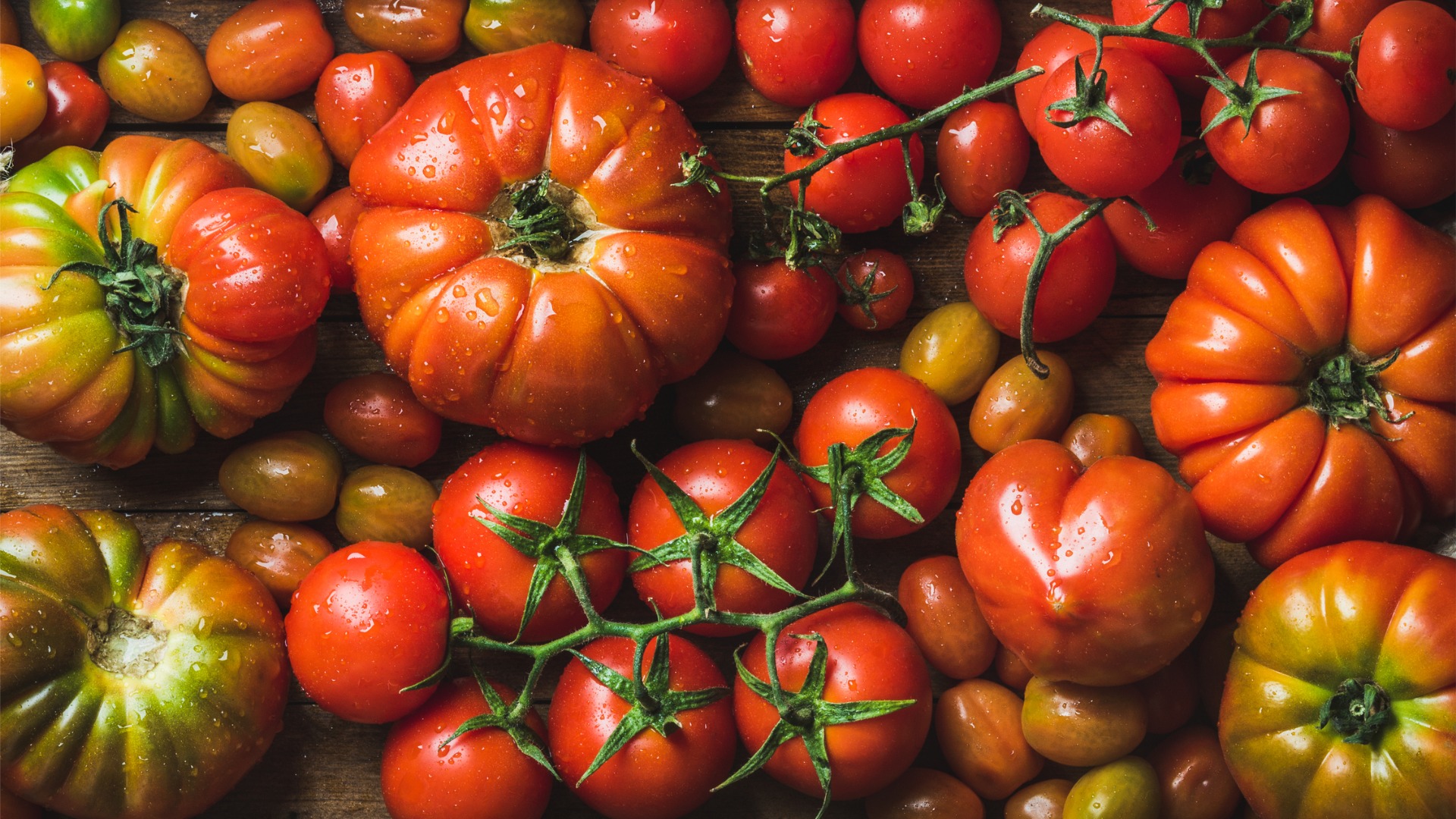
Herbs
While Italian cuisine is known for its simplicity, fresh herbs and regional spices are still prized in the kitchen. Basil is a common ingredient in northern Italy, where it’s used in pesto, and in the south, where it’s seen on pizza. In fact, there are specific types of basil grown in these areas – Genovese basil and Napolitano basil.
Oregano is another key herb in Italian cooking. It’s most popular down in the south, where it’s paired with spicy foods, grilled meats, and grilled vegetables. US soldiers following WWII brought oregano back to America where it’s used on pizza.
Expect to see rosemary pop up on your culinary tour of Italy. It’s a staple herb in Abruzzo, alongside chili peppers and garlic. Rosemary also shows up in Ligurian Focaccia bread, stuffed meat in Marche, and as part of bread desserts in Tuscany.
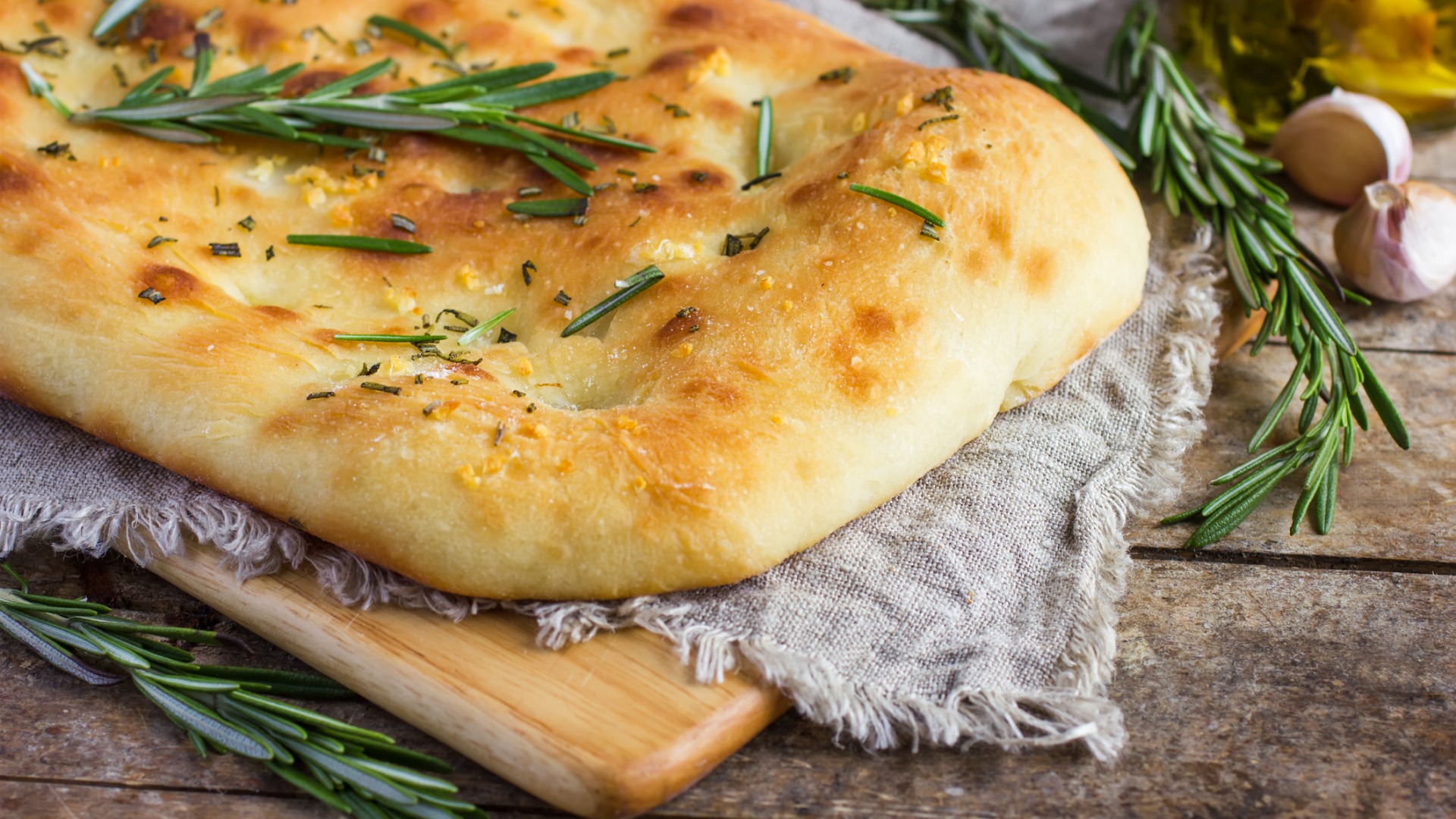
Cheese
Cheese has long been an important part of Italian cuisine. During the reign of the Roman Empire, Greek bakers in Sicily were known to be the best cheesemakers. Cheese continued to be a staple food throughout the centuries, even earning trademarks and protections in the modern era.
Like most Italian ingredients, different varieties of cheese are popular in every region. In Emilia-Romagna, Parmigiano Reggiano is the cheese of choice. Buffalo Mozzarella is well-known in the south while Ricotta cheese appears in both sweet and savory dishes throughout the country, such as the famous Cannoli in Sicily.
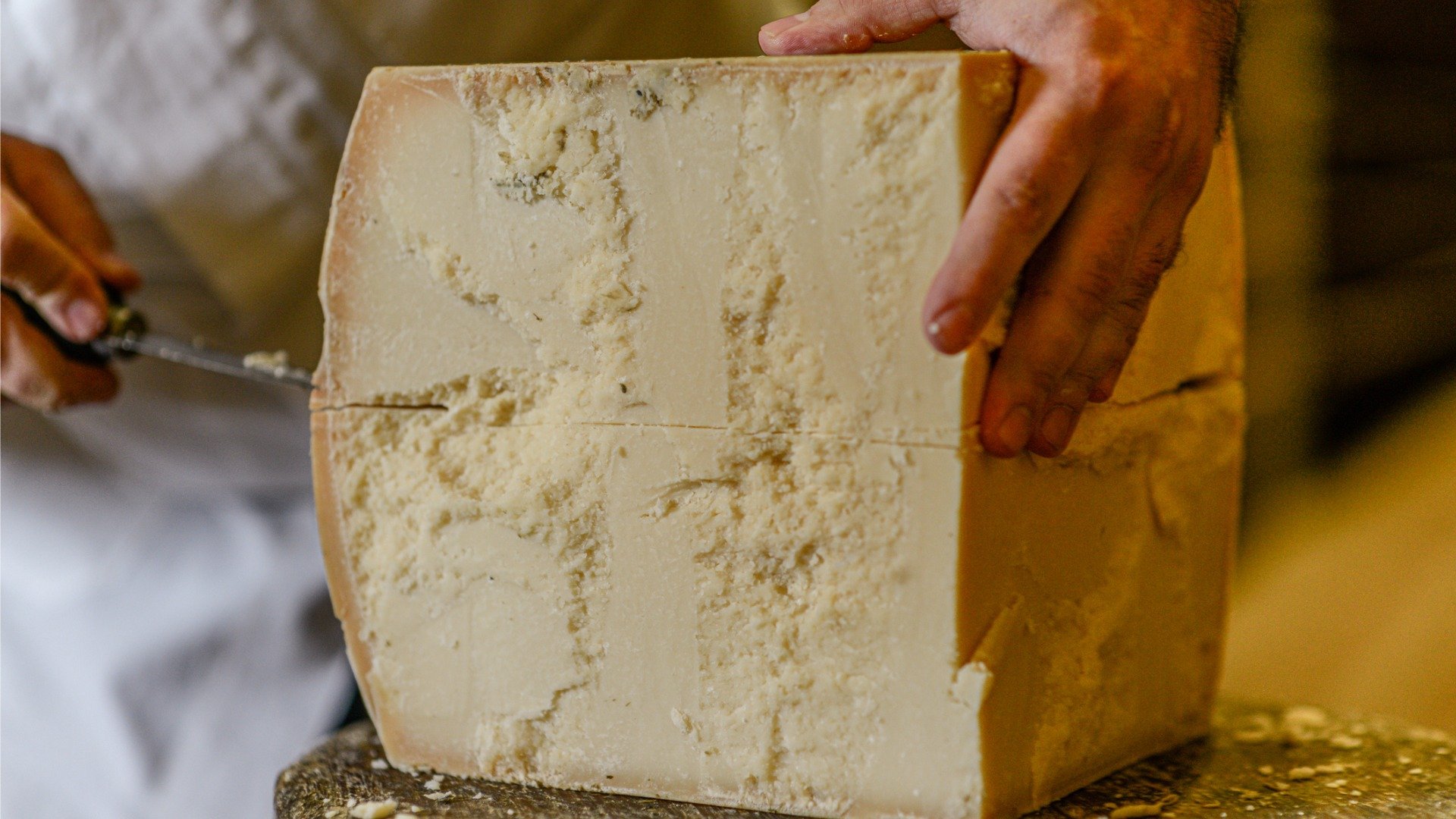
Meat & Seafood
Besides a quick leaning towards vegetarianism in the Middle Ages, meat and seafood have always been prominent in the Italian diet. Beef, pork, and poultry are served as standalone dishes, as well as incorporated in Italian pastas. Italy is also well known for its cured meats, such as Prosciutto, Salami, and Pancetta from the Emilia-Romagna region.
Naturally, seafood is most popular in coastal areas of Italy but enjoyed throughout the country. It’s typically the second course served in an Italian meal and traditionally eaten on Christmas Eve. Mussel dishes are seen in Puglia and Abruzzo, shellfish is common in Calabria, Marche serves stuffed fish while sardines are a big hit in Sardinia.
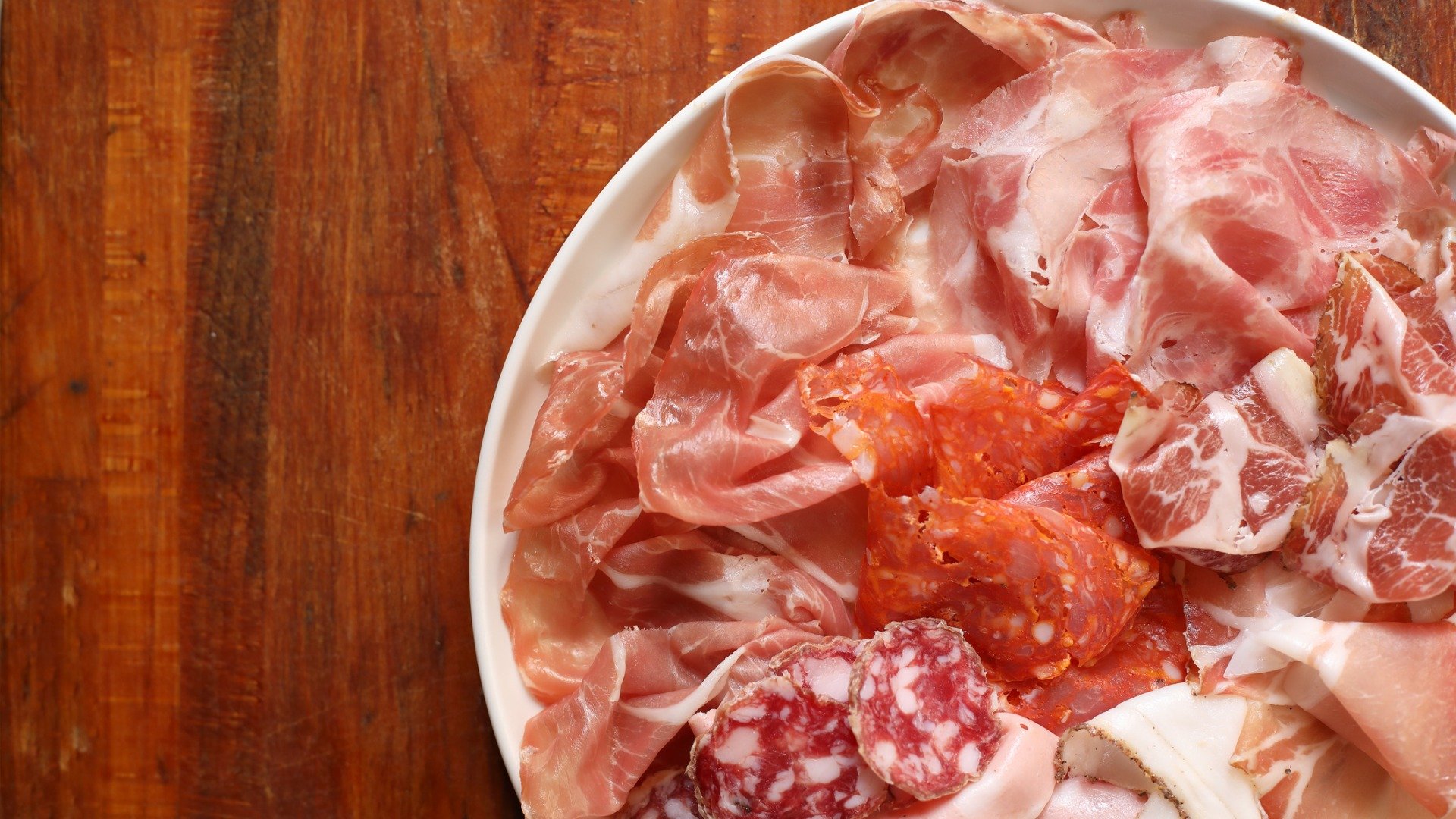
Regional Variations of Italian Cuisine
As we’ve already mentioned, Italian cuisine varies widely from region to region, allowing you to have an unparalleled gastronomical experience no matter where you go. Below is a list of some common characteristics and popular dishes you’ll find in the different areas of Italy.
Northern Italy
Fish, potatoes, rice, corn, and heavier meats, like pork and sausages, are regular parts of Northern Italian cuisine. Of course, pasta is also a staple, usually made with fresh eggs compared to Southern Italy, where you’ll see more dried pasta with durum wheat.
Liguria, on the northwest coast of Italy, is known for fresh fish, herbs, and vegetables. The region is famous for its Pesto sauce and local Focaccia. Ligurians also use chickpeas and chestnuts in their cooking.
Over on the northeast coast, the Veneto region’s cuisine varies depending on how close to the coast a city is. In Venice, Venetian cuisine highlights fresh seafood in dishes such as the famous squid ink Risotto. Inland, you’ll see more meat, as well as asparagus and pumpkin. Throughout Veneto and Northern Italy, Polenta is a common dish.
Lombardy’s cuisine is unique for its preference for stuffed pasta over dried, butter over olive oil, and the prevalence of both rice and Polenta. Famous Lombard dishes include Risotto alla Milanese (flavored with saffron), Ossobuco (veal and vegetables in broth), stuffed pasta, Grana Padano and Gorgonzola cheese, and Panettone (soft bread with candied fruit).
Emilia-Romagna might be the most famous region for foodies in Northern Italy if not all of Italy. Popular pasta dishes, such as Tortellini, Tagliatelle, and Lasagna, were born out of this region, as well as Italian staples like Parmesan cheese and balsamic vinegar. Emilia-Romagna is also well-known for its cured meats.
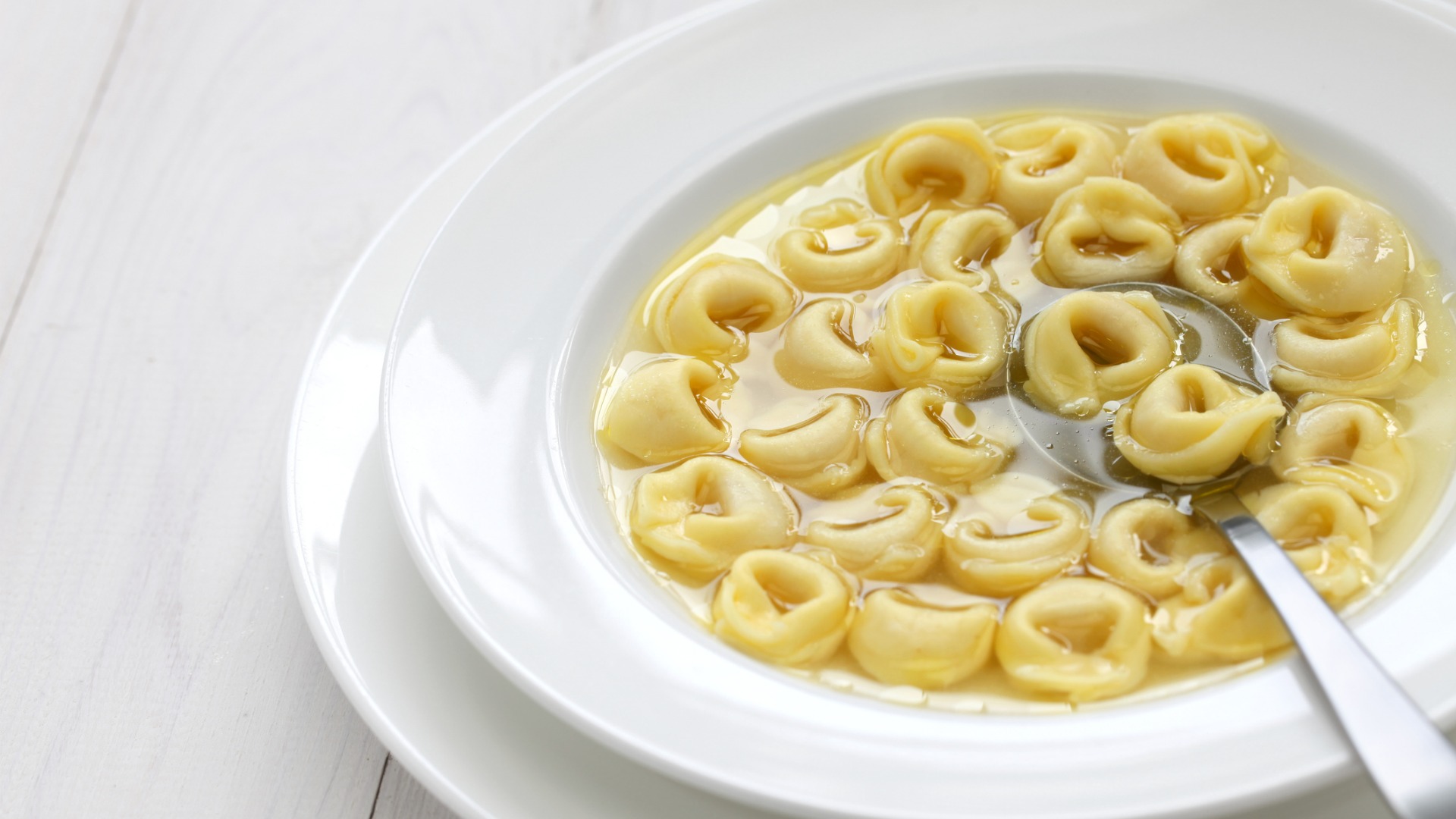
Central Italy
Central Italy comprises the regions of Lazio (where you’ll find Rome), Tuscany (where you’ll find Florence), Umbria, and Marche.
Much of the produce in Lazio comes from the Roman Campagna area. This has resulted in ingredients like artichokes, peas, lamb, and goat showing up in the regional cuisine. Some famous Roman dishes include pasta Carbonara and Arrabbiata, with homegrown ingredients like Pecorino Romano cheese and Porchetta.
Tuscan cuisine is all about simple cooking that highlights fresh local ingredients. Classic dishes include Ribollita (a peasant soup that uses leftovers), Pici (hand-rolled pasta), and Bistecca alla Fiorentina (Florentine steak). Tuscany is also well-known for its game meat served in Pappardelle pasta, prized white truffles, and rich wine region.
Umbrian dishes use a lot of local olive oil and herbs and are often roasted or boiled. Common ingredients include game meat (like boar and pheasant), black truffles, lentils, and freshwater fish. In nearby Marche, fish and seafood reign on the coast while pork is most prevalent inland.
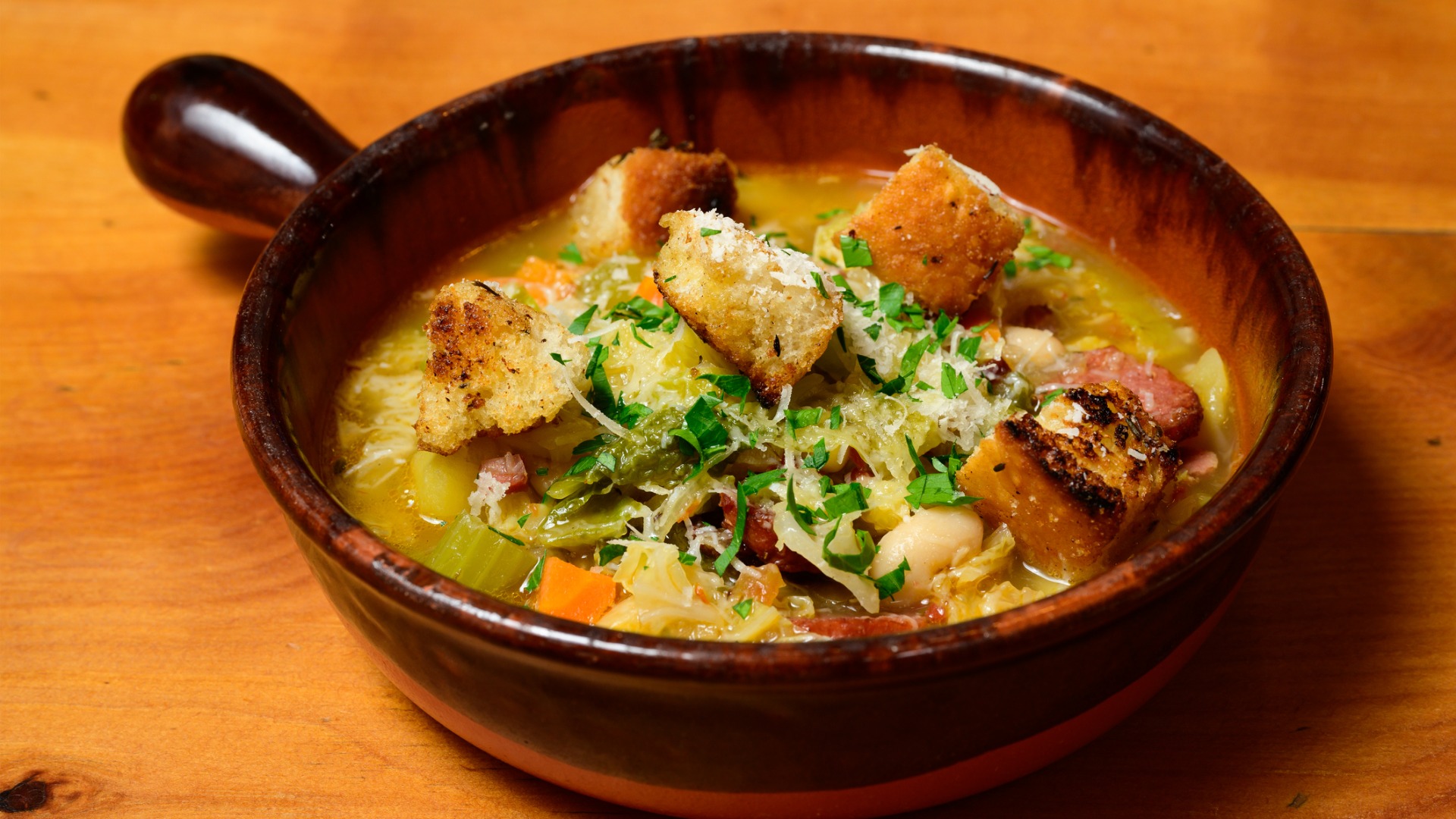
Southern Italy
The regions of Abruzzo to Calabria make up Southern Italy, with Campania (the home of Naples) being the most famous for food. We’re talking, of course, about the birthplace of pizza.
The volcanic soil in the Campania region gives a distinct flavor to the food grown here, which includes tomatoes, peppers, potatoes, and onions. The modern pizza was invented in Naples in the 17th and 18th centuries and features the region’s famous tomatoes and Mozzarella cheese.
In addition to Pizza Napoletana, Campania also makes and consumes a lot of pasta. Spaghetti alla Puttanesca is a local favorite. The area is also known for its distinctive desserts, like Struffoli and Sfogliatelle, and fresh seafood from the Bay of Naples.
Elsewhere in Southern Italy, chili peppers and lamb reign in Abruzzo and Molise. Next door in Puglia, you’ll find lots of local produce. Famous regional dishes include Orecchiette pasta, Zeppole donuts, and Focaccia bread. These regions are also well-known for being big producers of top-quality olive oil.
Rounding out Southern Italy are Calabria and Basilicata. French rule and Spanish cultural influences affected Calabria, whose specialties include seafood, spicy sausages, and their own take on Neapolitan pizza. In Basilicata, rural traditions feature in the local cuisine with ingredients such as pork, horseradish, and Crusco pepper.
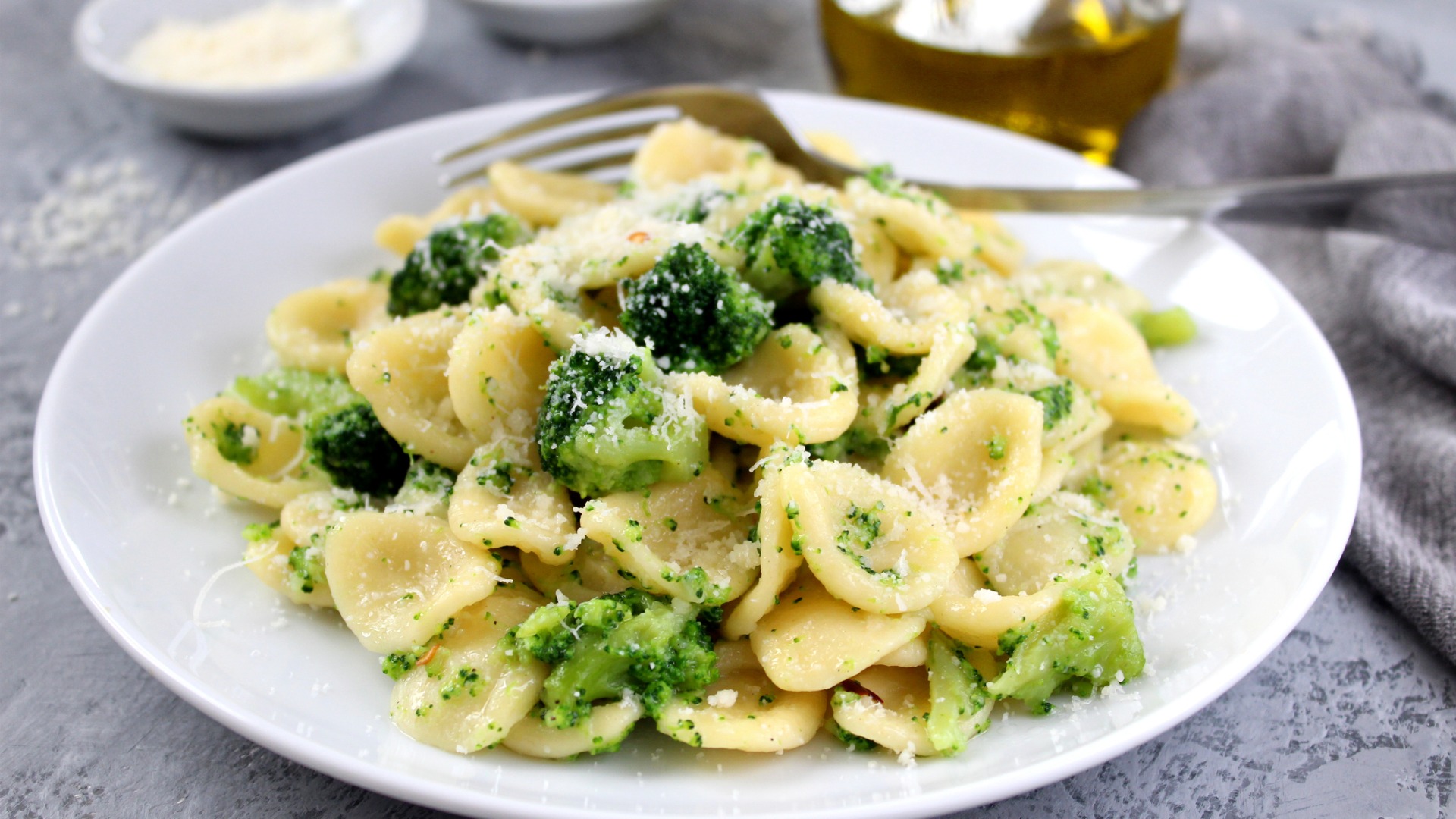
Islands
Italy’s two major islands are Sicily, off the toe of the boot, and Sardinia in the Mediterranean Sea. Both islands have distinct and delicious food histories and traditions.
Sicily’s cuisine is heavily influenced by the people who historically called the island home, including the Greeks, Spanish, and Arabs. Today, Sicilian cuisine emphasizes fresh vegetables and fish. A North African influence can also be felt in parts of the island where couscous and mint are common.
Favorite Sicilian dishes include Arancini (deep-fried rice balls), Pasta alla Norma (eggplant pasta), and desserts such as Cannoli and Granita.
Over in Sardinia, you can enjoy both meat, like boar and suckling pig, as well as seafood freshly caught off the island’s coast. You’ll also find mint, myrtle, sheep’s cheese, and Malloreddus pasta there.
Sardinia is well-known for Pane Carasau, a dry flatbread that is traditional on the island. When topped with tomato sauce, cheese, and a poached egg, Carasau is transformed into Pane Frattau, Sardinia’s take on pizza.
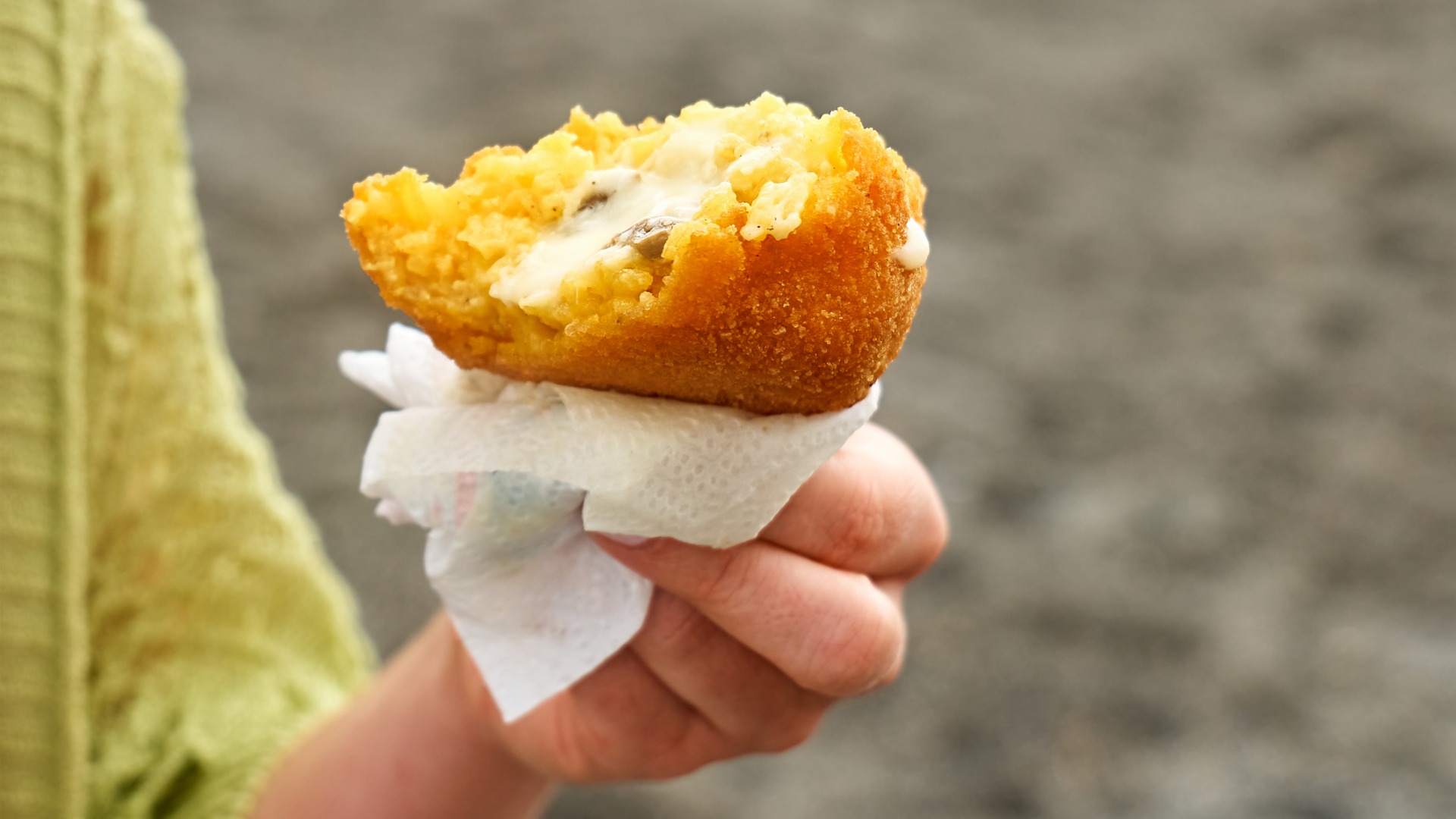
Iconic Italian Dishes
You’re likely familiar with Italy’s most iconic dishes, but we want to take this opportunity to share our favorites with you.
Pasta
Pasta is found throughout Italy, with each region specializing in their own pasta shape, ingredients, and sauces. In Rome, Carbonara made with cured meat, eggs, cheese, salt, and black pepper is popular. In Puglia, you’ll find Orecchiette (ear-shaped pasta) being hand-rolled on the street.
Emilia Romagna is the birthplace of some of the best and most well-known pasta types, such as Tortellini, Lasagna, and Tagliatelle. Enjoy Tortellini filled with meat, cheese, eggs, and nutmeg, served in a broth or fresh Tagliatelle mixed with a rich meat sauce.
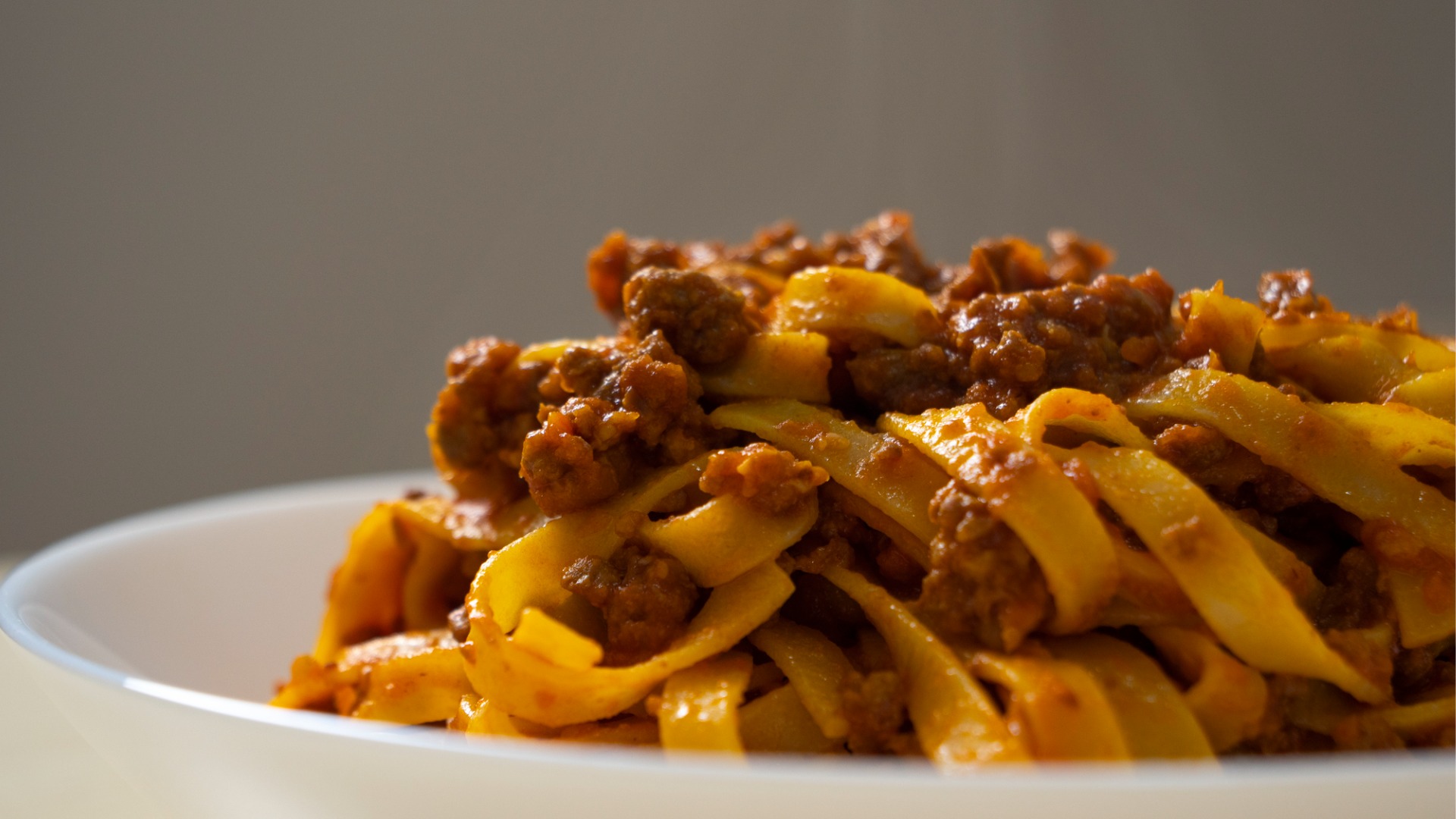
Pizza
While modern-day pizza was born in Naples, different parts of Italy put their own spin on it. In Rome, pizza is often thicker and can be served in square slices, while in Sardinia it’s served on a crunchy flatbread.
The classic Pizza Margherita relies on three iconic Italian ingredients: tomato, Mozzarella, and basil. These three ingredients also represent the colors of the Italian flag: red, white, and green.
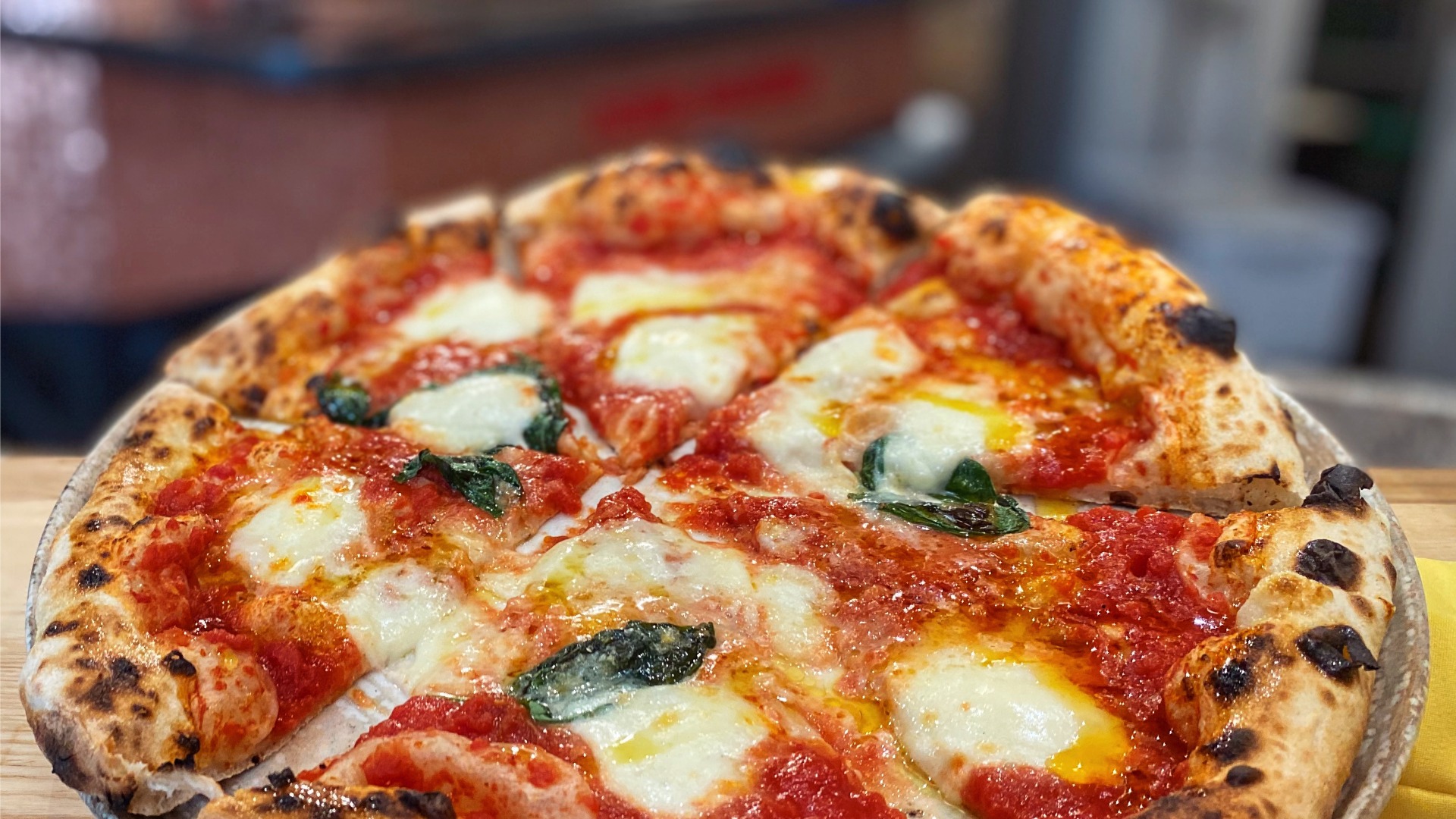
Risotto
Risotto is a rice dish you’ll find served in Northern Italy. The rice is cooked in a broth until it takes on a creamy texture. Each region has its own version of Risotto featuring different flavors and colors.
Risotto alla Milanese in Milan is made with beef stock and saffron, giving it a distinct yellow color. Risotto al Nero di Seppia from Veneto is black, made with cuttlefish ink. Other varieties include red wine, seafood, mushrooms, and pumpkin.
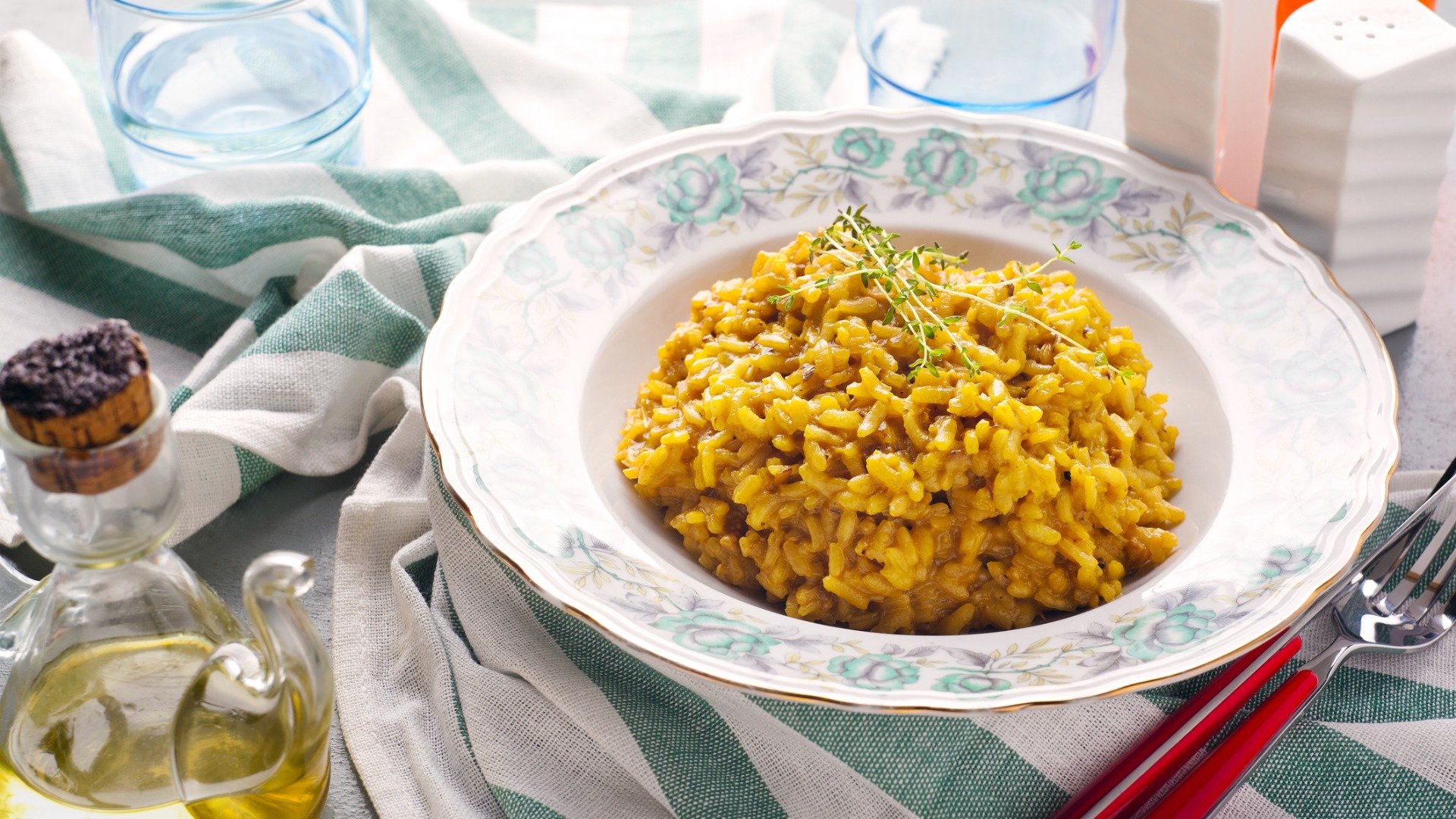
Antipasti
Antipasti are small, hand-held appetizers, usually served before the official first course of a meal. They can be hot or cold and vary widely across Italy, from a simple cheese and meat tray to deep-fried snacks.
Two popular Antipasti are Bruschetta and Arancini. Bruschetta dates back to Ancient Rome. It’s a piece of grilled bread with garlic and olive oil, often with tomatoes on top. Some regional varieties also feature meat, vegetables, and beans. Arancini are deep-fried, stuffed rice balls that hail from Sicily. The most popular Arancini filling is ragu which includes meat, tomato sauce, rice, and cheese.
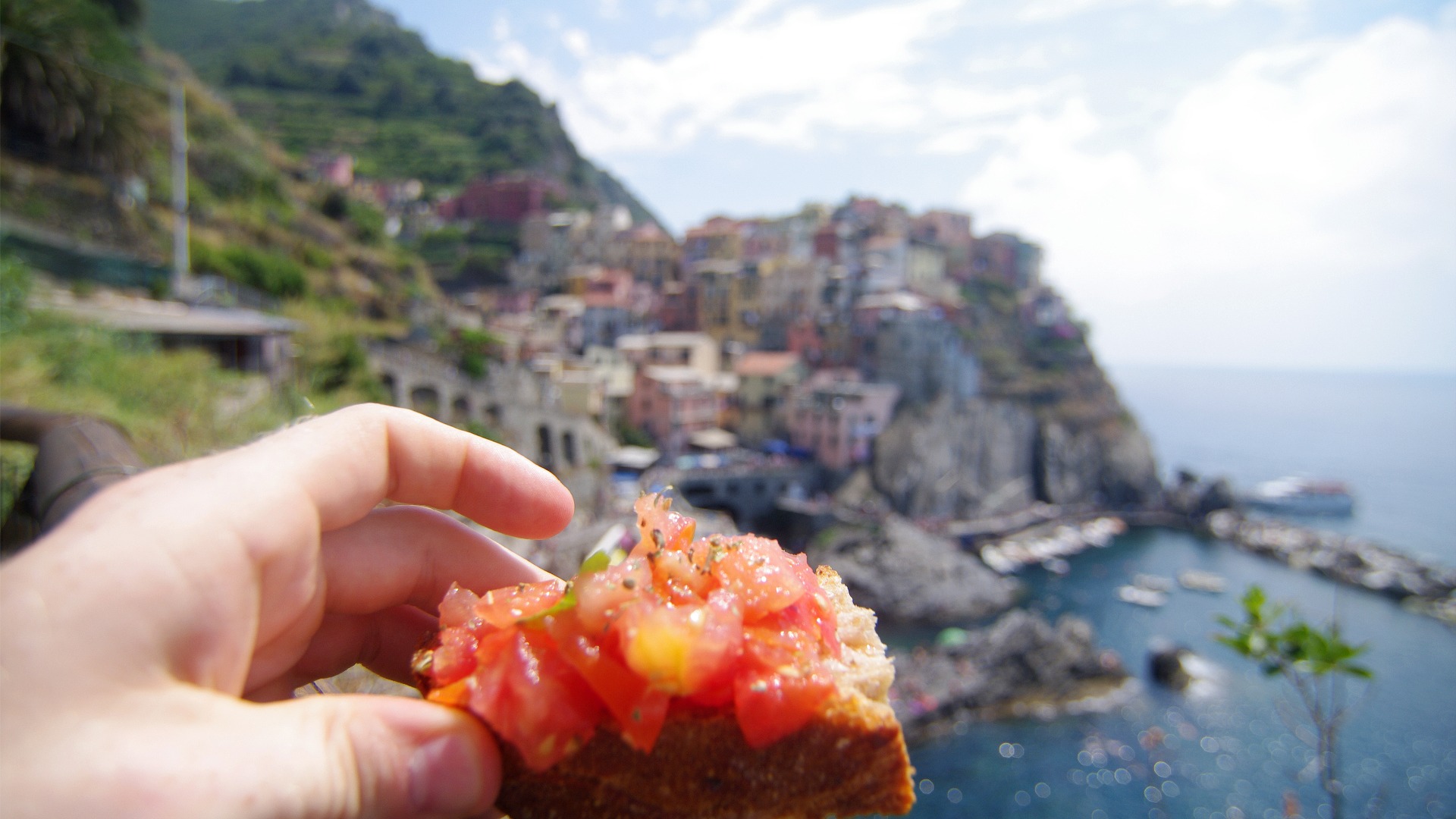
Dessert
To experience La Dolce Vita (the sweet life), you’ll want to indulge in some of Italy’s famous desserts. The most iconic Italian sweets are Tiramisu, Gelato, and Cannoli.
Tiramisu is a coffee dessert with Mascarpone cheese originating in the northeast of Italy in the 1960s or 70s. It’s traditionally served in a round glass and eaten cold. Common variations include adding alcohol, chocolate, or fruit.
Gelato is the Italian take on ice cream but contains less air and less fat than any other type of ice cream. The original Gelato, Fior di Latte, is plain with no added flavors or eggs. Popular traditional flavors include Stracciatella, custard, vanilla, chocolate, hazelnut, almond, and pistachio.
Cannoli is a Sicilian dessert that consists of a fried pastry dough filled with sweet Ricotta cheese. In Sicily, regional varieties of Cannoli pop up around the island. In Palermo, you’ll find Cannoli with candied orange while in Catania they prefer to add pistachios.

Italian Dining Etiquette & Culture
Italians follow a typical breakfast, lunch, and dinner meal structure, though much less importance is placed on breakfast. It can be a simple Cappuccino and pastry or skipped altogether. Lunch and dinner, on the other hand, can run for hours, especially at weekends, surrounded by friends and family.
Traditional Italian meals will have many courses, though these are often reserved for a special occasion, like weddings, Christmas, or other family gatherings. Everyday meals have fewer courses, but it’s unusual to have a single course in Italy.
Here are the typical Italian courses:
- Antipasto: bite-sized appetizers served before the meal, such as Bruschetta or Prosciutto and cheese
- Primo: first course, often a hot starch such as pasta, Risotto, or Gnocchi
- Secondo: second or main course, usually meat or fish with potatoes
- Contorno: side dish, likely a salad or vegetable
- Formaggio e Frutta: a first dessert of cheese and fruits
- Dolce: a sweet dessert, such as Tiramisu, often served with or before coffee
Before dinner, an aperitif can be served, while after dinner, a digestif may follow. These are alcoholic drinks served to inspire your appetite (aperitif) and aid in digestion (digestif). Common aperitifs include Vermouth, Martini, and Aperol Spritz, while common digestifs are Grappa, Limoncello, and Sambuca.
Italy also has several dining establishments, each fitting into a clear role. The most common ones include Agriturismo (a working farm that serves locally made produce), Osteria (serving simple yet great food from the region), Panificio (a bakery), Ristorante (more upscale cuisine), and Trattoria (family-run, informal dining).
Some shops and restaurants only specialize in one type of food, such as Formaggeria (cheese), Gelateria (gelato), Paninoteca (sandwiches), and Pizzeria (pizza, of course).
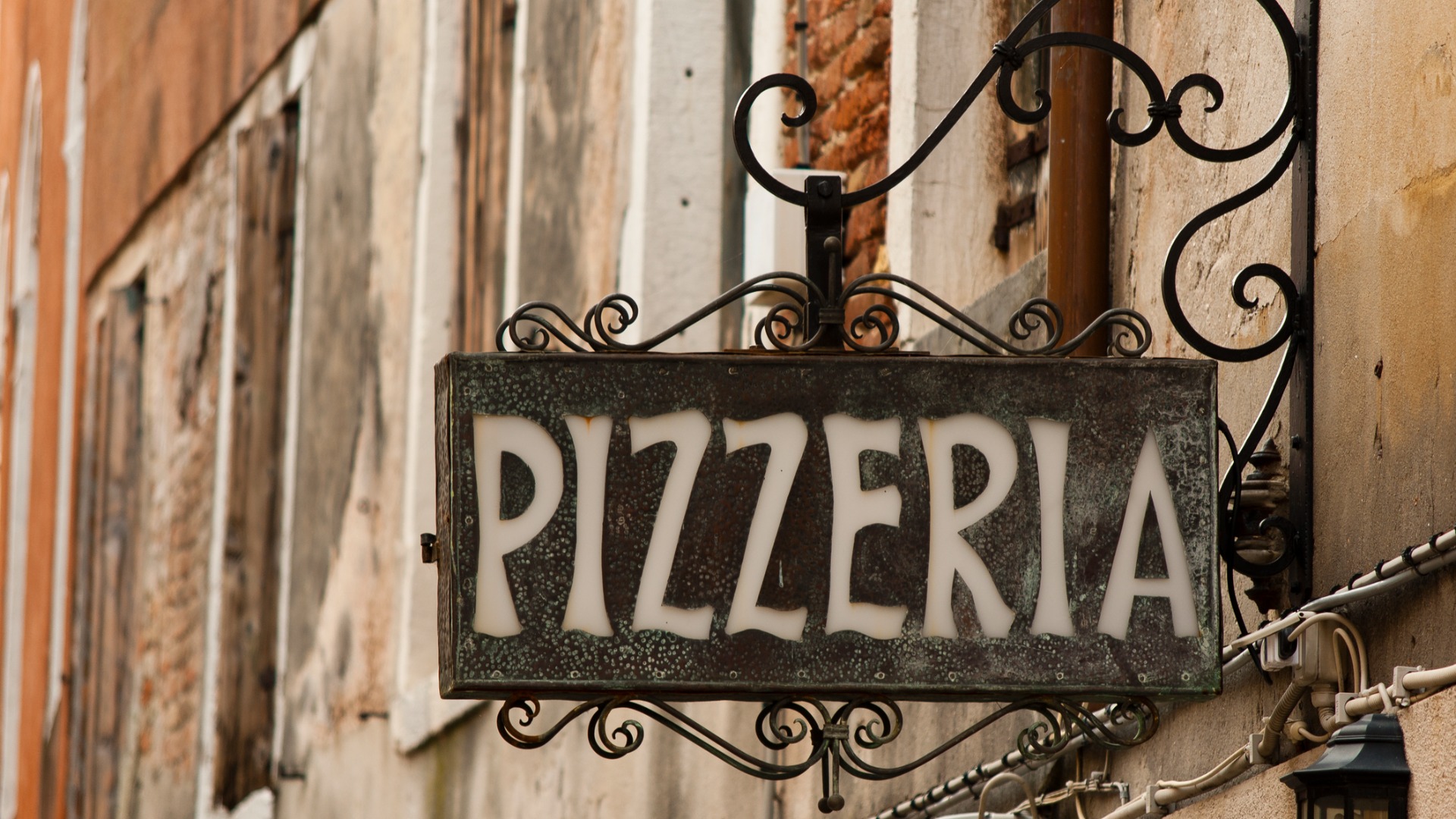
Influence of Italian Cuisine Worldwide
Due to immigration, travel, and the ease with which ingredients can now be imported, Italian cuisine is a worldwide phenomenon that has influenced several different cultures.
In Africa, previous Italian colonies, such as Ethiopia and Eritrea, still see the influence of Italy on their modern cuisine. Italian South Africans keep up the demand for Italian meat and cheese, while South Africa has begun producing olive oil.
Across Europe, Italy’s influence has affected pasta-making in Croatia and the cuisines of nearby Nice, Corsica, and Malta. And let’s not forget Slovenian Ravioli and Gnocchi, and Swiss Polenta and Risotto.
Italian immigration to South America and Oceania has also impacted their cuisines, creating interesting fusion dishes such as Sao Paulo’s take on pizza, Venezuela’s version of Lasagna, and Australia’s chicken parm.
The most famous example of Italian cuisine’s global influence is seen in the United States where Italian Americans put their spin on traditional Italian recipes and ingredients. The result is a rich culture of Italian-American food and new regional rivalries, like New York pizza vs Chicago pizza.
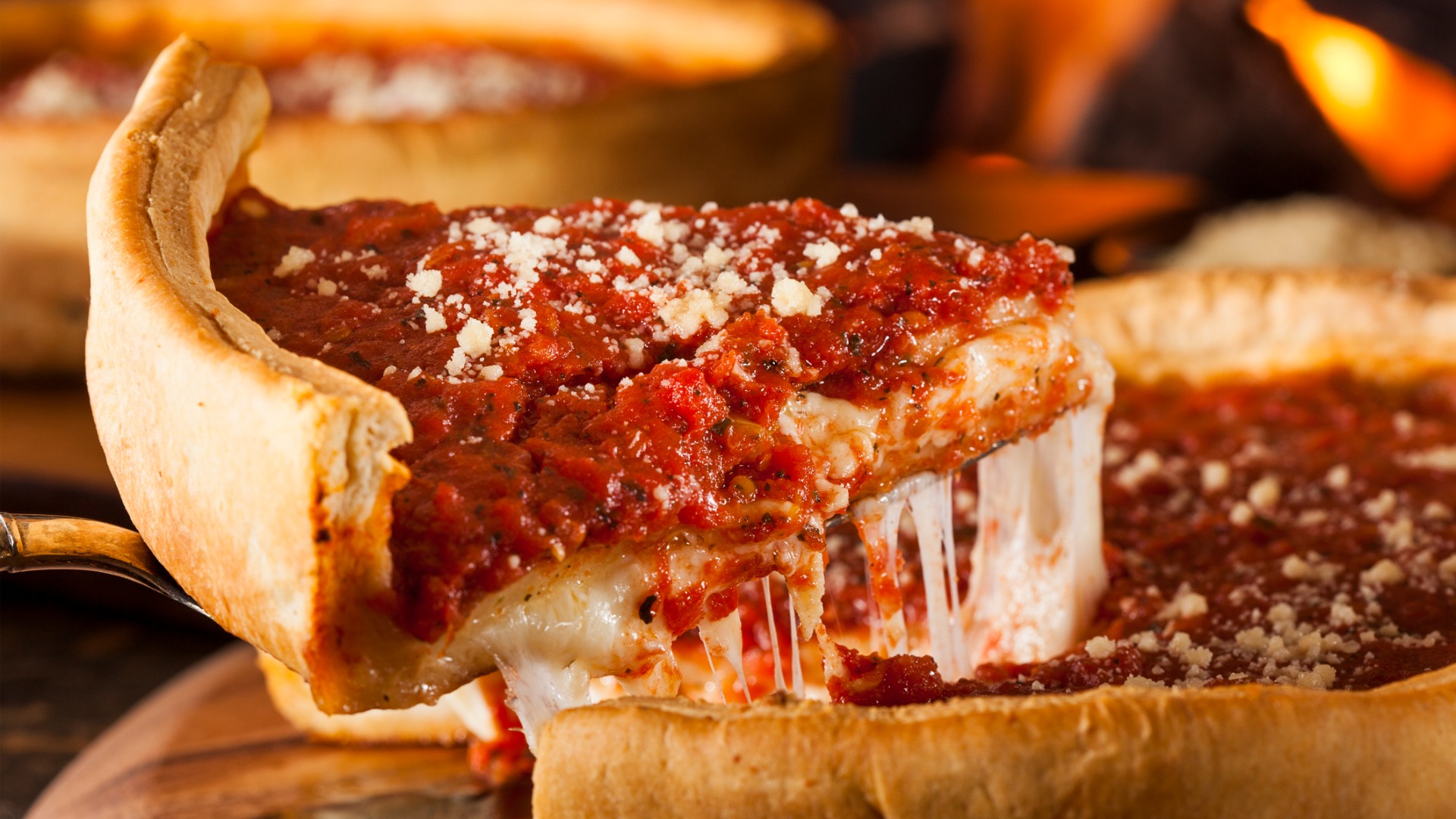
Taste The Best Italian Food With JayWay
We hope this overview of Italian cuisine has inspired not just what you’re having for dinner tonight but your next trip to Italy. While Italian food has spread around the globe, there’s truly no better way to appreciate the regional differences, traditional cooking methods, and Italian way of enjoying food than by eating in Italy.
If you want to savor all the delectable traditional dishes of real Italian cuisine and delve into the culinary culture of this remarkable European country, leave it in the hands of our expert trip planners to craft the best custom itinerary for you, an Italian journey that would satisfy not only your taste buds but also any foodie, art aficionado, nature enthusiast, or simply lover of the sweet life.

Born and raised in Athens, Maria’s passionate about travel and storytelling, a combination that makes her ideal for her role as our content manager.